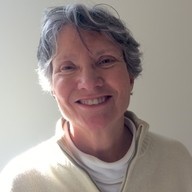From Program Director Linda Jackson:
We decided to downsize this year. Our family home, long an empty nest since our youngest ones flew away, is simply too large for two people. There were rooms we didn’t go into, parts of the yard that we never saw, and decades of stuff that seems to reproduce when we weren’t watching. Most of all, we had a home that deserved to be full with a new, happy family.
The challenge was: Where would we move to in Marin? We wanted a smaller place in a neighborhood where we can walk about, close to restaurants, shops, and the movies. After months of searching, we found what may be be very last new unit in Marin. With little new housing being proposed in Marin, others will find it even more challenging to downsize to a smaller place.
No doubt about it, the process of downsizing is daunting.
It took months of sorting, a moving crew of millennials, and many boxes to give away and donate the things we don’t need anymore. It’s been a sweet good-bye journey, leaving the house we called home the past 28 years. It’s also been great fun to explore our new neighborhood near downtown San Rafael.
I can’t help but wonder how much harder it would be to do this if we were in our 70s or 80s? What options are there for older people in Marin as their lifestyles change? Will there be enough resources for people who want to grow older in their home and community? For those facing dementia or declining health, will they have what they need for safety and companionship?
The question for Marin is: what percentage of residents are going to choose to stay in San Rafael as they grew older? According to a national survey by AARP in 2012, about 90% of older adults intend to stay in their own homes for the next 5 to 10 years.
Have you heard of NORCs, which are a “naturally-occurring retirement community”? The parameters vary in the field, but I like this simple one: if 50 percent of a community’s residents are over 50, then the town is considered a “NORC.” Marin County hasn’t reached NORC status yet, although in 2010 the median age of Marin residents was 44.5, and there were 5,000 more people aged 75 and older than those five and under. There are some Marin places close to having a majority of residents over 50. In Belvedere, 41 percent of its residents were over 50 in 2010. A few communities in Marin have already reached NORCdom, such as the unincorporated community of Dillon Beach, where 62 percent of residents in 2010 were over 50! (You can look up fun census facts at factfinder.census.gov/faces/nav/jsf/pages/community_facts.xhtml#)
People working with older adults are aware of the issues facing people as they grow older. Will there be housing for others who want to downsize? Will there be enough housing for the people who work in Marin – those who are caregivers, healthcare managers, and homecare experts? What about low-income people who need affordable housing, or people who need extra care, like assisted living or memory care? The recent report Older Adult Housing in Marin: Planning for 2030 estimated that 7,000 of today’s older residents need affordable housing, and that there is a shortfall of hundreds of assisted living and memory care units to meet the 2030 demand.
One small part of the housing solution in Marin is to support, fund, and streamline the process to create more accessory dwelling units. The new units can be for a caregiver, a family member, the homeowner (who can then rent out the main house), or a close-by neighbor, and can provide extra income for the homeowner. In San Rafael, the number of new accessory dwelling units doubled last year, and the city is on track to double that again. We need to do this across Marin!
This month, A.A.I. is working with our partners to ask local Councils and the Board of Supervisors to budget and prioritize funding, support, and streamlining for accessory dwelling units in 2018-19. Join us by talking this month with your elected leaders and challenging them to support this housing option for older people in Marin.
Working together, we can make a difference, starting with a place to call home.
Now, off to unpack some more boxes!


